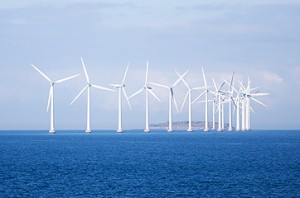
Event Review: Energy Innovation 2013
 On January 29 the Information Technology and Innovative Foundation, along with the Breakthrough Institute, hosted an event entitled Energy Innovation 2013. The purpose of the event was to present the current state of clean energy, specifically solar, wind, nuclear, and energy storage technology, and to discuss the progress being made in the creation of a clean energy economy.
On January 29 the Information Technology and Innovative Foundation, along with the Breakthrough Institute, hosted an event entitled Energy Innovation 2013. The purpose of the event was to present the current state of clean energy, specifically solar, wind, nuclear, and energy storage technology, and to discuss the progress being made in the creation of a clean energy economy.
Robert Atkinson, President of ITIF, began the conference by declaring that there must be a global solution to getting greenhouse gas emissions close to zero, for the United States cannot lead the charge alone. He noted an important reality in that only when it makes economic sense will clean energy become better and more widely used than fossil fuels.
Micheal Shellenberger, President of the Breakthrough Institute, argued that it is important for the United States government to subsidize innovation and not production, and that it is admissible to have a high rate of failure in conducting clean energy operations. He also highlighted the progress clean energy is making in bringing down costs, with the price of solar panels and wind dropping significantly in recent years. He pointed to the fact that cheap natural gas is replacing coal in generating electricity, which has led to overall reductions in greenhouse gas emissions in the United States.
The first panel of experts discussed the current state of clean solar and wind technology. They noted the explosive rise in the use of wind power to generate electricity, and currently about 3.5% of American electrical capacity is generated by wind. There have also been big gains in the solar industry: 3.2 gigawatts of solar power were installed last year alone, and with about 119,000 workers in the solar industry, there has been a large increase in employment.
 As for the future of solar and wind projects, some suggestions were made. Natural gas can be a viable partner to wind power, and there are ways that we can operate the electricity grid more flexibly. Stability, engagement, and strategy over the long-term are crucial in integrating these energy technologies into the economy.
As for the future of solar and wind projects, some suggestions were made. Natural gas can be a viable partner to wind power, and there are ways that we can operate the electricity grid more flexibly. Stability, engagement, and strategy over the long-term are crucial in integrating these energy technologies into the economy.
The next panel of experts discussed the current state of nuclear energy and energy storage. Among some of the ideas discussed were small modular reactors, one next generation design, which the nuclear industry believes has some promising characteristics: they can be produced rapidly on assembly lines and do such things as process heat, desalinate water, and provide electricity. However, unless the public is educated more thoroughly on the benefits of nuclear power, the industry still faces an uphill climb competing with natural gas.
They did not see nuclear waste disposal as a significant problem, instead as one that could be overcome with more development in recycling technology. The Waste Isolation Pilot Plant in New Mexico was cited as a model facility for effectively storing waste.
The last panel focused on debating the future of American clean energy policy. Fred Krupp, President of the Environmental Defense Fund, argued that while we are making progress in promoting clean energy, it is not being done quickly enough to reduce carbon emissions. He stated that he was in favor of a cap on carbon emissions. On the other hand, Ted Nordhaus, Chairman of the Breakthrough Institute, stated that we cannot price, cap, or regulate our way to a low carbon future. He was very adamant in his belief that the key to transitioning to a clean energy economy is developing clean, cheap, and abundant technology.
One key point that the panelists consistently emphasized was that constant innovation plays a key role in driving down costs of clean energy. Each panelist believed that maintaining and even improving research and development funding is crucial to improving clean energy technologies. There must be a global solution to solving climate change, and innovation must be emphasized in order for solar, wind, nuclear, and energy storage technologies to grow.






[…] Event Review: Energy Innovation 2013 […]